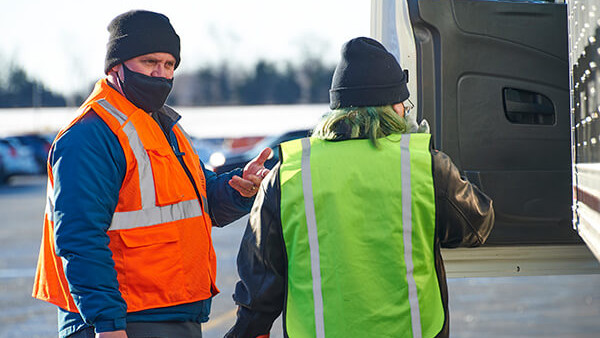A well-established training program, tailored to an operation's needs, is a key component of a motor carrier's safety program. A lack of customized training aimed at your operation's and drivers' specific needs can lead to accidents and incidents.
These accidents can result in:
- Fatalities,
- Injuries,
- Vehicle damage,
- Lost freight,
- Downtime,
- Fines/penalties,
- Increased insurance costs, and/or
- Litigation.
Accidents and incidents can also result in poor CSA scores, prompting an investigation or audit that could shut down a motor carrier's operation.
Establishing a training program to meet your operation's needs can be challenging. Let's take a look at three of the top challenges safety professionals face when working to develop a training program.
1. Topic Selection
What topics should be included in a training program? There is no "one size fits all" answer to this question. The list of training topics varies from one motor carrier to another. The types of vehicles being operated, cargo being hauled, and specifics of the operation will all play a part in topic selection.
Because of this, you need to take a good look at and assess your operation, considering questions like these:
- Do you operate in adverse conditions, such as snow and ice?
- If so, this type of defensive driving training should be conducted every fall to reinforce safe driving practices.
- Has a new issue cropped up, such as drivers not completing a driver vehicle inspection report (DVIR) properly when required?
- A review of how to properly complete a DVIR should be included in your scheduled session.
- Are you seeing an increase in accident or incident reports related to a specific topic, for example backing?
- If this is the case, focused instruction on this driving task should be conducted.
2. Management Buy-In
For some safety professionals, getting the support of management can be a challenge. Though a training program can ultimately save a motor carrier money by reducing accidents, incidents, and citations, it is difficult to tie these monetary reductions to the up-front expense of a training program.
In order to justify the training program, you will need to:
- Outline the reasons for conducting the training,
- Identify the individuals who need the training, and
- Provide a time frame and cost estimate for the training program.
Explain the program's objectives and expected benefits, including a reduction in accidents or incidents, lower insurance premiums, and a reduction in citations and fines. Also, be able to describe how you will document the effectiveness of the training.
3. Putting it all together
Developing an effective driver training program that is customized to address the issues that are most important to your organization and your drivers takes an investment of both time and money. When deciding how to structure your training program you need to;
- Assess your operation,
- Select and implement meaningful training topics,
- Select effective and efficient instructors,
- Secure materials and facilities, and
- Keep the safety message front and center (including after training) with ongoing communication.
Putting all of this together requires dedicated personnel and facilities. Depending on your operation, it may be easier and cost-effective to work with an outside training partner.
When selecting an outside training partner consider:
- The training partner's ability to address topics relevant to your operation;
- The partner's ability to customize to any specific or unique needs you may have;
- The type(s) of learning experiences provided by the training partner (online, classroom, range, road);
- The knowledge and experience of the training provider's trainers;
- Facilities used; and
- Overall reputation of the organization providing the training.
The bottom line
The bottom line — you want to keep your corporate safety message in front of your drivers at all times. A solid, meaningful training program can help foster a corporate culture of safety throughout your organization.
Learn how J. J. Keller can help with your driver training program — Call 888.473.4638.

